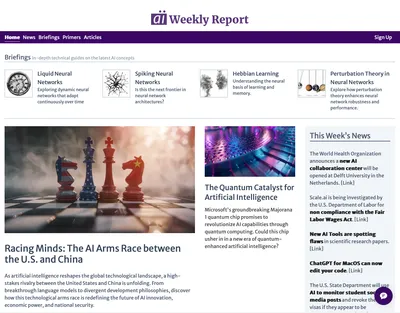New AWS GenAI Seminar: Practical Generative AI Implementation
Launch of our intensive one-day AWS GenAI seminar designed for IT professionals ready to harness the power of generative AI using AWS Bedrock and related services.
with Enterprise AI Training & Solutions
Use the power of AI to propel your business forward

From training and implementation to ongoing support, we provide end-to-end AI services for enterprises
Comprehensive AI training programs tailored for both technical teams and business leaders
Custom AI solutions to elevate your business
Stay ahead with our curated insights and industry analysis
See how we've helped leading organizations transform their businesses with AI

Delivered comprehensive training program on using AI code assistants to speed up space-related software development.

Created custom AI training curriculum for financial analysts and technology teams.

Developed an intelligent seed planting guide using machine learning and climate data.
Stay updated with the latest developments in AI, industry insights, and company announcements
Bringing together deep technical knowledge and practical business experience
Expert insights and resources from our sister website, AI Weekly Report, to keep you at the forefront of AI innovation

Stay ahead of the curve with our expert analysis of the latest AI developments and their business implications.